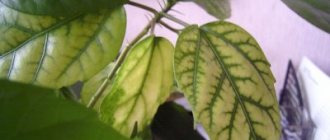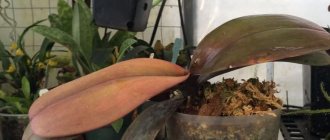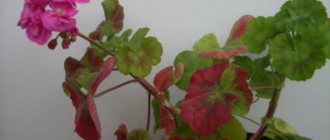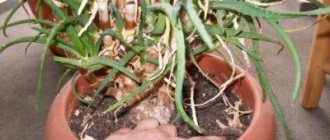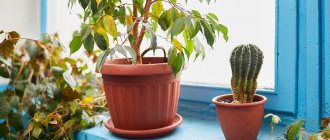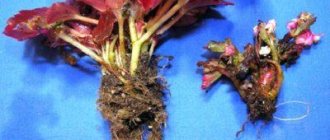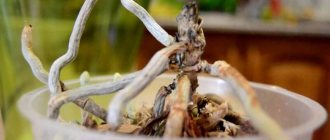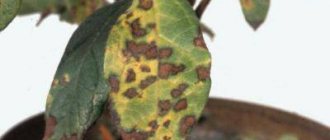Which trees turn red in autumn?
Before listing the trees whose leaves turn red in the fall, let's talk about why this happens.
You probably all know that the leaves are green at the beginning of their life cycle, the reason for which is such an important substance found in plants as chlorophyll.
The production of pigment responsible for photosynthesis is carried out by plants until the temperature conditions allow them to do so, that is, during the summer period. And then autumn comes and gradually begins to get colder.
In some regions, the color of the leaves begins to change already in mid-August, that is, the production process in the leaves begins to gradually stop from this period.
The content of red and yellow pigment in plants is constant, but due to the large amount of chlorophyll, it is difficult for it to “manifest”, and therefore the leaves are green. But when pigment is no longer produced for photosynthesis, the leaves gradually begin to change their color.
Now the trees turn red in some cases and yellow in others. Why is this happening?
According to biologists, the reason for this is a pigment called anthocyanin. Plants mainly produce it in the fall. In the summer, it can be said to be practically absent from the leaves.
Anthocyanins perform the function of protecting leaves from freezing in cold weather and overheating in hot weather. But besides this, it also repels parasites.
In some continents, in the autumn, trees and shrubs turn yellow (Europe may be included), and in others they turn red (America and Asia).
Which trees turn red in autumn?
Typically, trees such as mountain ash, maple, aspen and bird cherry turn red in the fall.
Prevention
To prevent the leaves from drying out and turning red, you should follow a number of recommendations:
- Correct pot size. It should be spacious and have a tray. Make sure there is no stagnation of water.
- In winter, the flower should be dormant.
- In spring, prune and pinch geraniums.
- Feed regularly, especially during the flowering period.
- In spring and summer, fertilize pelargonium once a week.
- Monitor the balance of minerals.
- Ensure optimal temperature conditions (18 - 20 degrees Celsius).
If you follow all the above tips, you can forget about such a problem as redness of the leaves.
Tree leaves. Making a herbarium
The book “My Herbarium. Leaves of Trees" is a ready-made album for the herbarium. It contains 16 spreads dedicated to 16 trees, the most common in our area. These are birch, maple, chestnut, linden, rowan, poplar, aspen, oak, ash, elm, alder, willow, spruce, pine, larch, apple tree.
By the way, this is the special value of books written by domestic authors: everything here is about our realities. Any tree can be found near your home or in the nearest park.
Each spread of “My Herbarium” contains magnificent illustrations and many interesting details about how a tree works, why it is called that, what leaves, flowers and fruits it has, and what benefits people get from it.
For example, maple. What can you find out about him? For example, the fact that maple trees also have flowers! For many this will be unexpected news. The maple tree is also a symbol of Canada and a source of delicious maple sap from which syrup is made. And maple wood is valued for its clear and beautiful “voice”, which is why musical instruments are often made from it.
And this is an elm. A very common tree, which for some reason few people can recognize and identify right away. And it’s probably a shame for the elm, because it’s so beautiful! And don’t forget to stroke its leaves - they are very velvety on the inside. And – very recognizable! Take a closer look: you see that they are unequal - as if one half of the sheet decided to run away, moved a little, and then changed its mind.
And here is the rowan. Which of us, as a child, did not try its juicy red berries? We tried it and made a face: wow, that’s bitter! But they tried it wrong! It turns out that these berries become sweet after the first frost. I’m making a mental note: be sure to try rowan this winter!
There is a lot of space in the book for gluing leaves. And for good reason! If you collect, for example, leaves of different types of oak or maple, they will all fit on the desired page, and you won’t even have to crowd together.
All “herbarium” pages in the book are covered with tracing paper. This is very convenient for storing dried leaves. You insert the sheet, glue it if you wish, and that’s it, you’re done! Here, for example, is our birch page.
And at the bottom of each page, don’t forget to sign where and when you found this sheet. In the park or on the embankment, near the school or in the yard of your house. At the same time, you will capture the geography of your own walks for the future!
How to help a plant
Any change in the color of the leaves of indoor plants indicates some kind of violation. First of all, you need to find a possible cause. You need to start with a careful examination of the entire plant and the earthen coma. Most likely, you will have to replant the flower, so you can prepare a pot in advance (the same size for an adult plant, and a couple of centimeters larger for a young plant), new soil, and material for the drainage layer.
If the flower has not been watered for several days and the soil is wet, it means that it has most likely been over-watered for some time. You need to remove the plant from the pot, inspect the roots; if there are rotten or damaged roots, as well as roots that have begun to dry, you need to carefully clean them from the soil to assess the damage.
All damaged roots are cut off with a sharp, disinfected instrument, then the living part can be immersed in a pale solution of potassium permanganate for 20–30 minutes.
In case of diseases, the loss of most of the root, the plant will be able to cope if it is not completely affected. To check this, you need to carefully make a small cut on the top of the trunk with a sharp knife. If the tissue is green, then only the lower part of the plant is affected. Geranium will cope with the problem, you just need to help it. But red or brown colors on the cut indicate that the plant has died.
Leaves affected by diseases or pests need to be trimmed, flowers or buds will also have to be removed so that they do not take away the strength that will be needed to restore the entire plant.
New nutritious, disinfected soil is poured onto a drainage layer of expanded clay or other material, the plant is lowered, the roots straightened, and soil is added, filling all the voids. After replanting, you can water the plant with settled, clean water so that the soil compacts and sticks to the roots, and then the pot is placed in a bright place (not in direct sunlight) and the geranium is observed for several days.
After a week, you can spray the leaves with Zircon, which will help withstand stress; after another 3-4 weeks, you can carry out the first fertilizing with a balanced fertilizer, for example, Kemira Lux.
If the cause of the redness was direct sunlight, then you don’t need to do anything at first, just move the flower to a new place and observe; there’s no need to do an unscheduled transplant.
To treat diseases and get rid of pests, one transplant is not enough; you will have to use special preparations and quarantine the plant.
Which trees turn yellow in autumn? What color are the leaves in the autumn
Autumn is a bright period in nature, when the forest changes the color of its leaves from green to yellow, red and brown in a matter of days.
What explains the riot of colors during the leaf viewing season? Why do some trees turn yellow, others turn red, and then they turn brown.
The explanation lies in the replacement of chlorophyll with other substances: carotenoids and anthocyanins. In summer, trees have a lot of nutrients, but with the arrival of autumn, this supply gradually decreases. With the depletion of reserves, the synthesis of chlorophyll stops. And then other pigments that are present in the leaves, but overlapped by the green color - yellow and orange - become noticeable. These are the same pigments that determine, for example, the color of carrots - carotenoids.
Leaves with red hues are the result of the formation of anthocyanins. These pigments are absent in green leaves. They begin to form in the leaves of some plant species after the disappearance of chlorophyll. Anthocyanins are the same pigments that give radishes, geraniums, roses or cauliflower their color.
The brightness of the color of autumn leaves depends on the weather. Trees wear their most beautiful clothes in sunny, dry weather, at temperatures of 0 – 7 degrees Celsius. If the weather is cloudy and rainy, then the leaves do not burn, but turn into dull yellow shades or even turn brown.
As winter approaches, yellow and red leaves gradually lose their pigments. Brown leaves, which can be seen in late autumn, with the onset of severe cold, after snowfall, are leaves in which there are no pigments left at all, and the cell walls have become noticeable.
How to save indoor geraniums with reddened leaves
If the leaves turn red, a number of questions arise. How to help and what to do?
Sequencing:
- First you should inspect the plant to see if there is an infection on it. Lightly trim the top; if the stem is green, the top part is healthy. If the top is brown, the plant is in an advanced stage of infection and there is no point in saving the plants.
- If the stem is normal, the geranium should be transplanted into new soil. You need to use special soil.
Important! Purchased soil may contain infections and bacteria; it should be disinfected before planting.
If pests or fungus are found, the plant should be treated with special preparations.
Check the soil moisture; if the bush has been watered for a long time and the soil is still wet, the geranium has been watered.
Replanting a bush
When the cause is determined, the pelargonium should be replanted. Purchased land should be disinfected; for these purposes the following means are used:
- Planriz;
- Estrasol;
- Alirin-B;
- Glycoladine.
Disinfection is carried out according to the following scheme:
- the tablet is diluted in a glass of water;
- fill the pot and water the soil with the solution;
- cover the container with film;
- leave in this state;
- on the third day, plant the geranium in the soil.
Top dressing
After transplanting indoor pelargonium, it is necessary to ensure proper nutrition. You should take a responsible approach to the choice of mineral fertilizers. First of all, geranium needs the following chemical elements (potassium, nitrogen, phosphorus). For lush flowering, in combination with three mineral additives, add magnesium sulfate, iodine promotes abundant flowering.
Important! Fertilizing should be done in spring (May) and summer; bait should be excluded in winter.
To normalize nutrition you need:
- check the soil for acidity (pH 5.5 -6.5 is considered the norm);
- at high temperatures, excess moisture and dry air, nutrients are poorly absorbed;
- Before using any organic fertilizer, you should carefully study the instructions and strictly follow the dosage.
Important! An overdose contributes to the appearance of dry and red leaves.
Tree with red leaves in autumn. Trees with red leaves in landscape design
More and more ornamental trees and shrubs have purple and red leaves. They are usually brightest in the spring and darken and become less vibrant in the summer and fall. Some of them, such as peaches and some apple trees, turn red immediately after blooming and then turn completely green. Such bushes and crowns need to be trimmed, because their young shoots look just like flowers against the background of old ones.
Since red pigments increase resistance to the scorching sun and prevent attack by herbivorous insects, it is not surprising that the number of purple and red trees and shrubs used in landscaping is growing rapidly.
Many of them also have other attractive features: an interesting leaf shape, a weeping or spherical crown. Bladderwort, Japanese spirea, elderberry, barberry, cherry and apple trees also bloom and bear fruit beautifully.
For gardens, first of all, it is worth choosing those varieties that grow slowly. Small plants, such as Japanese dwarf spirea and Barberry thunberga 'Bagatelle', are often present in gardens in place of moderately tall perennials. They grow best in full sun - so you can use them as a protective umbrella for more sensitive plant species. They do not grow very well in the shade because they feel a lack of light.
In landscape design, it is better to use red leaf in moderation. The most effective compositions are plants with red leaves in a duet with green-violet or multi-colored trees, including golden or light green variations.
What substance colors foliage yellow: plant pigments
Yellow color is very beautiful in autumn, especially on a clear and warm day. It’s not for nothing that autumn is called golden. Almost any plant changes its color, starting with yellow. Yes, for some it is the only color, while others have it only as an additional color.
- A specific pigment is responsible for each color. Carotene – this pigment gives plants their yellow color. The word is familiar and can often be heard in advertising. Perhaps many did not know its meaning. Or they just didn’t even think about what it was.
- This pigment belongs to the group of carotenoids. Found in all leaves and plants. Is in them constantly. It’s just that chlorophyll predominates over carotene, so the leaves are mostly green. And after its collapse, they begin to take on different colors.
Yellow leaves
- This plant pigment is used as a natural dye. It is extracted chemically, but exclusively from natural raw materials. It is widely used in food industry and other fields.
- Beta-carotene , which simply eclipsed the advertising business, also refers to carotenoids. The fact is that there are about 600 subspecies. Almost all yellow, red, orange and even green vegetables and fruits have it. For example, green onions, tomatoes, pumpkin, persimmons, blueberries, sorrel, carrots. It's too long to list. It is also very important for the human body.
Which trees have yellow leaves in autumn? Which trees have yellow leaves in autumn?
The leaves of trees and other vegetation contain three main pigments: carotene, anthocyanin and the photosynthetic pigment chlorophyll, which absorbs energy from the sun and converts it into food for plants. It is chlorophyll, found in abundance in leaves, that provides foliage with its green color in spring and summer.
There is another substance in the leaves - the plant growth hormone auxin, which controls a special type of cells located at the base of the leaf cuttings - the so-called shedding layer. During growth, auxin prevents it from fully forming and blocks the tiny internal capillaries that connect each leaf to the tree's circulation system, reports https://www.sciencedaily.com/.
However, with the arrival of autumn, cooler and shorter days stop the production of auxin, which stimulates the growth of the shedding layer, and the circulation of water, nutrients and sugars in the leaves is blocked. When this happens, the rapid breakdown of chlorophyll begins, and the leaves turn yellow thanks to carotene. At the same time, anthocyanin provides their orange and reddish shades. In cloudy weather, anthocyanin activity decreases and orange or yellow leaves are more common, but not red foliage.
A group of scientists from the University of North Carolina at Charlotte have found new patterns in the appearance of red and yellow leaves in the fall. The research was led by Emily Habink, who examined different tree species in different areas.
It turned out that red leaves usually appear on trees that grow in poor soil, and yellow leaves on trees that grow in rich soil. It was also found that red leaves make it possible to more efficiently use the nutrients they contain in conditions of their deficiency.
As you know, in the fall the synthesis of the green pigment chlorophyll, necessary for photosynthesis, stops in the leaves. After which the leaves change color and fall off, but before that the tree extracts all the nutrients from them and stores them for the winter. And this is especially important for trees growing in poor soil.
There is an opinion among scientists that the red color of the leaves is given by the anthocyanin pigment, which usually begins to be synthesized just in the fall, when chlorophyll breaks down. However, then it is not clear why trees should waste energy on the synthesis of new pigment in leaves that will soon fall anyway. However, one theory is that the new pigment protects weakened and vulnerable leaves from sunlight, allowing them to last as long as possible so that the tree can extract as many nutrients from them as possible.
Adhering to this theory, Habink tried to confirm or refute it. Through research on red maple and amberwood, she discovered that in higher elevations where the soil is poorer, these trees have much redder leaves than the same species in fertile floodplain areas. Therefore, the findings support the theory that the production of anthocyanins helps the leaves last as long as possible and allows the tree to more efficiently stock up on nutrients for the winter.
How to treat swelling on leaves
How to treat swelling on leaves
Swelling and brick-colored spots on apple tree leaves can appear as a result of rust disease. In this case, the leaf plate will have a painful appearance. She is deformed. A convex tubercle or swelling appears on each leaf. Their color is reddish. You may notice an orange tint. Rust itself does not destroy the tree, it only weakens it. The apple tree loses some of its immunity and can easily catch a more dangerous disease. In addition, due to the disease, winter hardiness is sharply reduced. For the winter, the diseased tree is generously mulched with peat, humus and sawdust. Part of the trunk can be covered.
Fighting rust is a must. Firstly, branches and foliage with signs of disease are pruned. Secondly, abundant spraying with fungicidal agents is organized. Vincint, Topaz, Fitosporin M are suitable. Bordeaux mixture and products containing sulfur can be used.
Varieties of trees. Deciduous trees and shrubs: names and photos
Deciduous trees and shrubs include many varieties. Next you can see photos of deciduous trees, which are often found in gardens in central Russia. We suggest you find out the names of deciduous trees, which can be fruit-bearing and decorative.
HORSE CHESTNUT – AESCULUS
- Flowering time: depends on the species
- Location: best sunny
- Reproduction: acquiring new plants
The common horse chestnut is too large for most gardens. Choose one of the bushy horse chestnuts instead. There is the small-flowered horse chestnut (A. parviflora) 3 m high, blooming with white flowers in July - August, and the pavia horse chestnut (A. pavia) of a similar size, blooming red candle inflorescences in July.
BIRCH – BETULA
- Flowering time: March - April
- Location: sunny or partial shade
- Reproduction: acquiring new plants
A popular tree with bark, most often white in color. Birch trees have a shallow root system - do not plant anything under them. Water during prolonged drought. Weeping Birch (B. pendula) 9 m high is popular - yellowish catkins, white bark, twisting branches. Its form 'Purpurea' has purple leaves and branches.
IRGA – AMELANCHIER
- Flowering time: April - May
- Location: sunny or partial shade
- Reproduction: by rooted offspring in autumn
Copper-red foliage and white flowers in spring, red berries in summer and orange-red leaves in fall. The most popular species is the Canadian Irga (A. canadensis) reaches a height of 6 m. Its star-shaped flowers appear in erect inflorescences, and its berries become black when ripe.
POPLAR – POPULUS
- Location: sunny or partial shade
- Reproduction: acquiring new plants
This tree is not for small gardens. The leaves of T. white or silver (Palba) 10 m high have pubescence on the underside, and the leaves of large-leaved poplar (P candicans) 'Aurea' are variegated. Pyramidal Black Poplar (P nigra) 'Italica' is one of the best trees with a narrow columnar crown shape.
CARYOPTERIS
- Flowering time: September - October
- Location: must be sunny
- Reproduction: by cuttings under glass in summer, woody cuttings in autumn
A rounded border shrub that grows in all types of soils, including chalk. The main species is C. clandonensis, 1 m high. It has gray-green leaves and lavender flowers in terminal inflorescences 10 cm long. The variety 'Kew Blue' has dark blue flowers.
Pear gall mite
In spring, when the air temperature rises above 10°C, gall mites penetrate young pear leaves (as a rule, they settle on their back side) and feed on the juice. In these places, light green swellings form, which over time acquire a red-brown color, after which they dry out and crack.
To prevent the spread of gall mites, in the fall, clean the trunks of old bark and whiten them with lime mortar. In the spring (before buds open), spray the tree crown with acaricidal preparations (for example, 0.2% Decis or Inta-Vir - 1 tablet per 10 liters of water). If necessary, repeat treatments in summer. At the same time, alternate chemicals with different active ingredients, since ticks quickly adapt to acaricides.
- Fungicide, insecticide and acaricide - what are these drugs and how to use them correctly
We understand the chemicals that are used in summer cottages to protect plants.
Also, remove any heavily damaged leaves immediately and burn them.
Trees in autumn description. Sunday walk in the forest in autumn (essay)
Autumn is a wonderful and very surprising time of year! There are trees around with yellowed and half-fallen leaves, and under your feet lies a huge carpet, full of a crazy variety of all bright and rich shades. And it’s even better if such wonderful landscapes are accompanied by the autumn sun, which no longer burns like in summer, but only slightly caresses and warms.
In such weather it would be unforgivable to sit at home; the best thing to do would be to take a walk. And the best day for a walk will be Sunday. A day off when you don’t need to rush or rush anywhere, but can take a measured and sedate walk through the autumn forest.
Such a walk evokes romantic images and is suitable for both a child and an old man. It would be best to take a walk alone to think about life, reflect on your worldview and admire the beauty of nature falling asleep for the winter. It’s still warm, there’s no cold or frost, but a slight chill has already forced people to put on jackets and scarves. The walk will be very captivating and will be remembered for a long time. The sky may not be overcast, but delight with its blueness and small clouds. Migratory birds are already flying south in their schools.
What deep thoughts about life are evoked by autumn nature, painted in different colors. There are so many divine shades here! There is yellow, and orange, and red, and even remnants of green. And all this abundance of flowers, a riot of colors surrounds us on all sides. It is these cozy walks in silence and solitude that will help you relieve stress, focus on something important to yourself, take a break from the bustle of the big city and retire to yourself.
Sunday walks in the forest, of course, can be carried out at any other time of the year, but autumn gives them a special charm and splendor, because autumn is the sunset of nature, which follows its long winter sleep.
What substance colors foliage orange: plant pigments
Orange color, like yellow, is constantly present in the leaves, it is simply overshadowed by chlorophyll. Thus, making the plants green. And the orange color also begins to appear when that same chlorophyll is destroyed.
- A pigment called xanthophyll is responsible for the orange color. It also belongs to the class of carotenoids, like carotene. After all, these colors are on a fine line between each other.
- I would like to note that it is this pigment that colors carrots. It contains the most of it. Consequently, this pigment is responsible for the orange color of all fruits.
- Xanthophylls, like other carotenoids, are essential for the human body. Other living beings too. Because they cannot synthesize it on their own, but can only get it from food.
Leaf color orange
- It is no secret that carrots are rich in vitamin A. Accordingly, all these pigments are the main carriers of this vitamin. More precisely, predecessors.
- It is also worth noting that they are antioxidants in our body. Every girl knows about this aspect. After all, the appearance of hair, nails and the body as a whole directly depends on this.
Preventing the appearance of red leaves in geraniums
Diseases of indoor and garden geraniums - treatment and care
To ensure that pelargonium blooms and is not susceptible to disease, it is important to take preventive measures:
- replant and fertilize in a timely manner;
- avoid frequent watering;
- in the spring, after the crop begins to grow, it is necessary to remove damaged areas and pinch the bushes.
It is important to use pest control products in a timely manner. Most often, the first symptoms of their appearance are hidden on the back of the leaves, so it is important to regularly inspect the flower.
Preventing the appearance of red leaves
Geranium is often grown on windowsills, as the plant can purify indoor air and is easy to care for. However, red leaves may form on the bushes. The causes are various factors, including diseases. To prevent problems, it is important to carefully monitor the plant and follow the rules of flower care.

